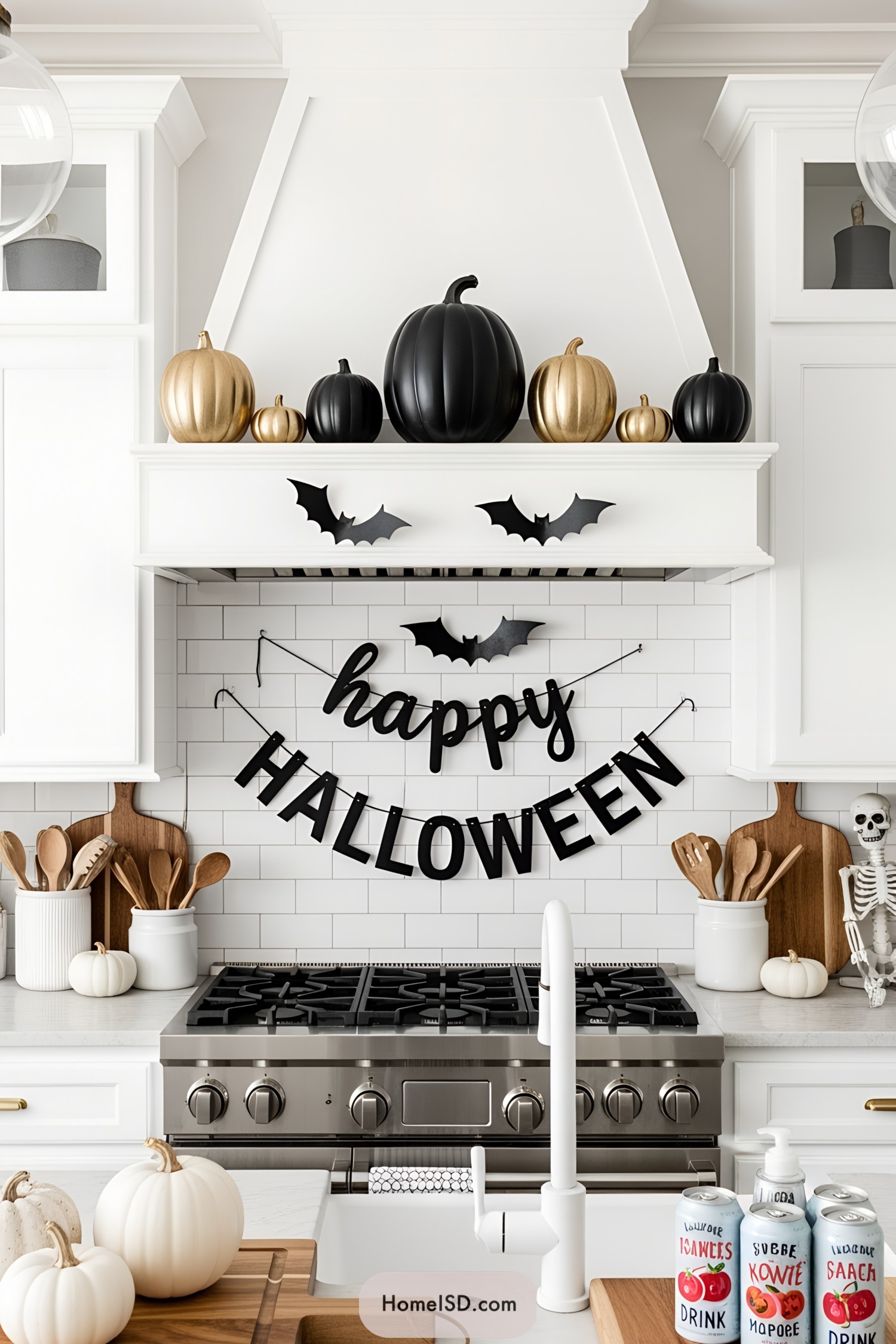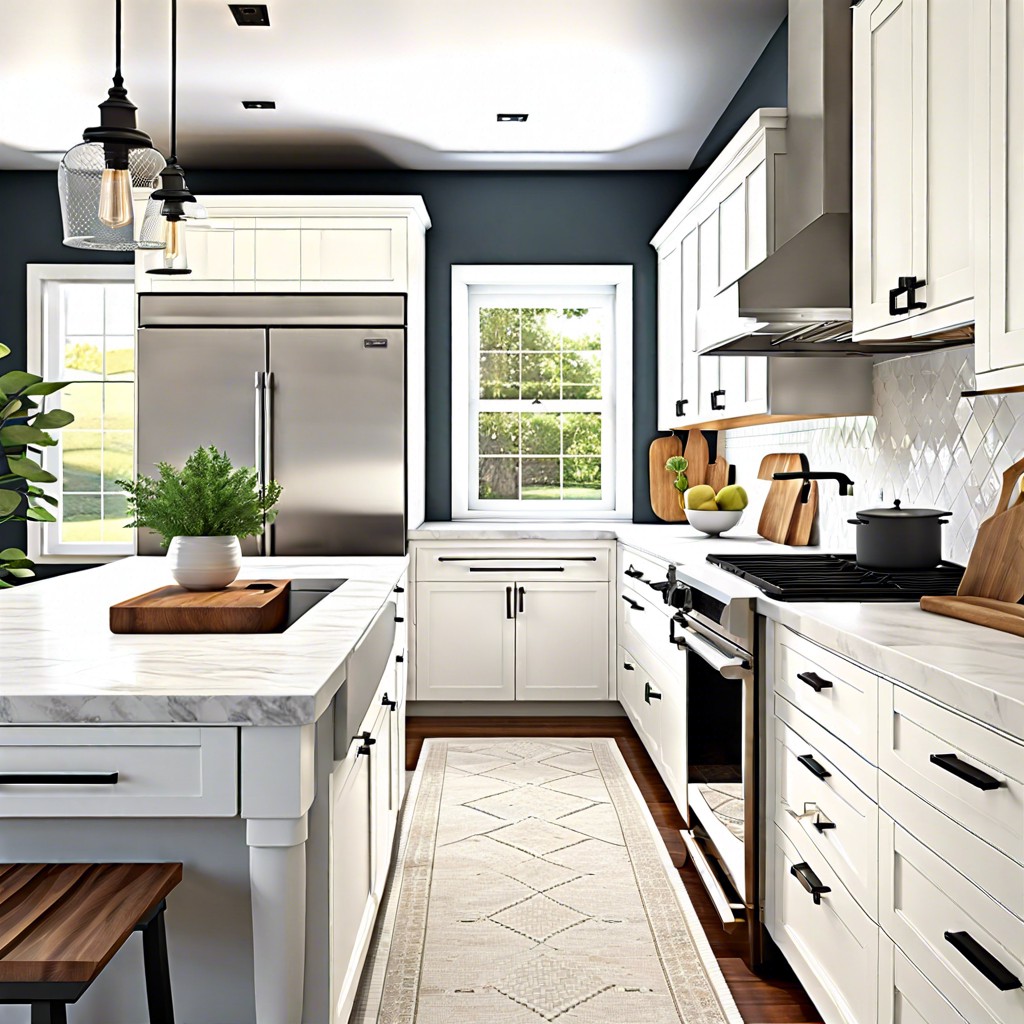Last updated on
Explore the enduring allure of stainless steel kitchen countertops, because they may be the versatile and budget-friendly solution you’ve been searching for.
Diving into the world of kitchen remodels often contains discussions about stainless steel countertops. If you’re considering this choice for your kitchen, understanding the pros and cons associated with this modern and sleek material is indispensable.
This reflective steel offers a unique suite of benefits including a sleek aesthetic, exceptional durability, and strong resistance to heat damage. It’s not, however, without potential downsides such as susceptibility to scratches and smudges.
Expected or not, each piece of information will help you make an informed decision about your kitchen’s future look. By the end of this article, you’ll be swimming in a sea of knowledge to make an informed choice about your culinary space.
Key takeaways:
- Stainless steel countertops offer a sleek aesthetic and exceptional durability.
- They are resistant to heat damage and easy to sanitize.
- However, they are susceptible to scratches and smudges.
- Maintenance is straightforward with regular cleaning using soapy water.
- Stainless steel countertops can range from to 0 per square foot.
The Benefits of Stainless Steel Countertops

Seamlessly blending with modern and industrial designs, stainless steel countertops offer a sleek look that can elevate any kitchen aesthetic. Their non-porous surface makes them incredibly hygienic—resistant to bacteria and easy to sanitize.
Durability is another hallmark of this material as it resists heat, stains, and water without flinching. Additionally, for those concerned with sustainability, stainless steel is a green choice; it’s recyclable, reducing the carbon footprint of your home.
When it comes to integrating culinary appliances, these countertops merge impeccably, creating a cohesive flow that professional chefs often prefer. As a bonus, their reflective surface can brighten up the space, making your kitchen appear larger and more inviting.
The Drawbacks of Stainless Steel Countertops

While the sleek look of stainless steel is a draw for many, it’s important to consider that this material is not without its disadvantages. Prone to scratches, over time, your shiny surfaces may bear the marks of every chop and dice, though some homeowners appreciate this patina of daily life.
Another consideration is noise – stainless steel can amplify the sound of clanging dishes and cutlery, which could be a bit jarring. Additionally, fingerprints and smudges make frequent appearances, calling for regular wiping if you’re aiming to keep that pristine shine. It’s also one of the pricier options on the market, so for those on a strict budget, it might not be the most economical choice.
Last but not least, dents can be an issue with thinner gauges, so think high-quality, thick steel if durability is a major concern.
Performance of Stainless Steel

Stainless steel endures the hustle of a busy kitchen without flinching. This material is resilient against high temperatures, meaning hot pots and pans can be placed directly on the surface without fear of damage. Equally impressive, it’s impervious to stains from spills – no worrying about wine or beet juice leaving their mark.
And for those who value cleanliness, its non-porous nature won’t harbor bacteria or odors, a win for food safety. The professional-grade appearance isn’t just for show; stainless steel is the same material used in restaurant kitchens due to its formidable ability to withstand the wear and tear of constant use.
Whether rolling out dough or chopping vegetables, the countertop holds up against scratches and dents, maintaining its sleek and functional appeal for years.
Easy, Breezy Maintenance

Caring for stainless steel countertops is remarkably straightforward—their non-porous nature means spills and stains don’t have a chance to seep in. For daily upkeep, a simple wipe with soapy water is sufficient; no need for specialized cleaners.
Even the most stubborn residue from cooking can typically be handled with baking soda and water, creating a paste that’s gentle but effective. To keep the surface gleaming, occasionally use a microfiber cloth with a bit of vinegar to polish and remove fingerprints. Harsh chemicals and abrasive scrubbers are to be avoided to protect the finish.
Spills should be cleaned up promptly to prevent water spots; drying the surface after cleaning maintains its luster. With minimal effort, your stainless-steel countertops will maintain their sleek and pristine appearance, contributing to a hygienic kitchen environment.
Stainless-Steel Countertop Installation
Stainless steel countertops, while sleek and durable, require expert installation to ensure longevity and function. Here are important considerations during the installation process:
- Professional Measurement: Precision is critical. A professional will take exact measurements of your kitchen space to guarantee a perfect fit.
- Adequate Support: Due to their weight, stainless steel countertops must be supported by strong cabinets. Verify your cabinets can handle the load or reinforce them if necessary.
- Seamless Integration: For a cohesive look and to prevent crumbs and liquids from slipping through cracks, opt for welded and polished corners.
- Sound Deadening: To reduce noise from dishes and cutlery, install a sound-deadening layer beneath the countertop.
Be sure to consult with your contractor about these points to secure a flawless and functional stainless steel countertop installation.
Types of Finishes
Choosing the right finish can elevate the functionality and aesthetics of your kitchen. Here are common options:
- Brushed: Fine lines create a matte effect, hiding smudges and fingerprints.
- Polished: A mirror-like shine that brightens the space but shows every mark.
- Satin: A soft sheen that’s between brushed and polished, offering a balanced look.
- Antique Matte: A rustic appeal that disguises wear and tear effectively.
- Hammered: A textured, handcrafted appearance for those after an artistic flair.
Each finish presents unique qualities that contribute to the durability and style of your kitchen’s centerpiece. Consider your lifestyle and the amount of activity your kitchen sees to select the perfect one.
How Much Do Stainless-steel Countertops Cost?
Understanding the cost of stainless-steel countertops is key for budgeting your kitchen remodel. Prices generally range from $75 to $150 per square foot, including installation. Several factors contribute to the cost:
- Gauge: The thickness of the metal impacts price; the lower the gauge, the higher the cost.
- Finish: Polished or hammered finishes may increase the cost.
- Size and Complexity: Custom sizes or countertops with integrated sinks will likely be more expensive.
- Fabrication: Countertops with elaborate designs or cutouts for fixtures require more labor, which can raise the price.
Comparatively, stainless steel is a mid-range option—more affordable than luxury materials like marble but typically pricier than laminate or tile. Always consider the long-term value; stainless steel offers durability and longevity that can offset initial expenses.
Alternative Metal Countertops
While stainless steel is a popular choice for modern kitchens, let’s consider some of the other metal options that can offer unique aesthetics and practical benefits. Copper countertops bring warmth with their rich hues, and they possess natural antimicrobial properties. They can, however, be prone to scratching and patina over time, which some find adds character.
Zinc is another material that develops a patina, giving it a lived-in look that can be quite charming in certain kitchen styles. It’s softer than stainless steel and might dent more easily, but it can add a beautiful old-world feel to the space.
For those who love the industrial look, pewter offers a softer sheen compared to stainless steel. It’s surprisingly workable for intricate edge designs but is also on the softer side, which means it can scratch and dent.
Aluminum offers a budget-friendly alternative with a similar appearance to stainless steel. While not as heat resistant and prone to scratches, it can be an ideal option for those who prioritize cost and the modern metallic look.
Each metal has its own set of considerations, and the right choice depends on your aesthetic preference, usage, and budget.
If You’re a Serious Cook, the Advantages to Stainless Steel Countertops
For avid home chefs, the restaurant-quality vibe of stainless steel is highly appealing. This material’s high heat resistance allows you to place hot pots directly onto the surface without damage. The non-porous nature also means that it won’t harbor bacteria, making it a hygienic choice for prep-heavy cooking.
Cleanup is a breeze; a quick wipe down with a damp cloth can handle most spills or debris. Plus, if you’re into dough rolling or pastry making, the cold surface is perfect for keeping things like pie crusts from getting too warm. Stainless steel can endure the pounding and chopping that comes with frequent meal prep, truly complementing the dynamic environment of a serious cook’s kitchen.
Shopping for Stainless Steel
When shopping for stainless steel countertops, prioritize quality and gauge. Look for 304 stainless steel, as it’s commonly used in the kitchen for its resistance to oxidation and corrosion. The gauge refers to the thickness, where lower numbers mean thicker steel; 16 to 18 gauges are ideal for durability.
Seek out reputable retailers or fabricators with positive customer reviews. They can often provide samples, allowing you to feel the texture and weight of the material before committing.
Consider the finish, as it affects both aesthetics and maintenance. Brushed or satin finishes help disguise fingerprints and minor scratches better than a mirrored finish.
Get detailed quotes that include not just material costs but also fabrication, edges, backsplashes, and installation. This prevents unexpected expenses.
Lastly, check warranty and service options. A good warranty can provide peace of mind, ensuring that your investment is protected.
FAQ
Is stainless steel a good kitchen countertop?
Yes, stainless steel is a good choice for a kitchen countertop due to its durability, resistance to heat, stains, water, and rust, in addition to its ease of cleaning.
How long do stainless steel countertops last?
With appropriate care, stainless steel countertops can last for over 20 years.
Can you put hot pans on stainless steel countertops?
Yes, you can place hot pans on stainless steel countertops, but be aware that they may show scratches, particularly from sharp tools.
How do you maintain the shine of stainless steel countertops?
To maintain the shine of stainless steel countertops, clean regularly with a homemade solution of vinegar and water, then polish with a soft cloth and a small amount of mineral oil.
Does a stainless steel countertop increase home resale value?
Yes, a stainless steel countertop can increase home resale value due to its durability, sleek aesthetics, and popular appeal in modern design trends.
Is it possible to install stainless steel countertops DIY?
Yes, it is possible to install stainless steel countertops DIY, although it requires some precision and careful handling of materials.
Recap




